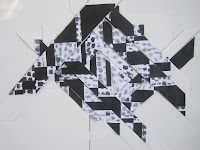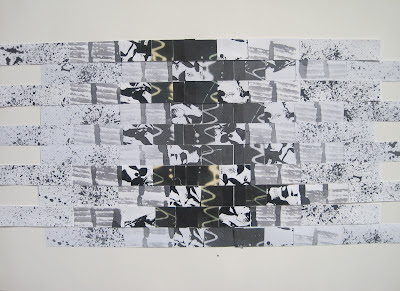 |
| Chapter 9 - Health & Safety + Evaluation |
 |
|
Image 9.16
Golden Section
sample – light to dark.
Diagonal lines have been drawn to show the spiralling and from these you
can see the perfectly formed rectangles.
|
 |
|
Image 9.15
Golden Section
sample– dark to light.
Diagonal lines have been drawn to show the spiralling and from these you
can see the perfectly formed rectangles.
|
 |
|
Images 9.14
Same strips arranged
into different designs.
|
 |
|
Images 9.13
Same strips arranged
into different designs.
|
 |
|
Images 9.12
Same strips arranged
into different designs.
|
 |
|
Images 9.11
Same strips arranged
into different designs.
|
 |
|
Images 9.10 – 9.14
Same strips arranged
into different designs.
|
 |
|
Image 9.9
The design
created in image 9.4 was cut up into diagonal (45o) strips and
arranged randomly into a pattern.
|
 |
|
Image 9.8
The photocopies
from 9.6 were cut into strips. A log
cabin patchwork design was created by placing the strips at right angles to
form the pattern.
|
 |
|
Image 9.7
The block was cut
into equal strips and every alternate strip was moved to for a staggered
design.
|
 |
|
Image 9.6
Another tonal
Fibonacci block was glued down and two photocopies were produced. One copy was placed up side down next to the
original.
|
 |
|
Image 9.5
The sections were
then flipped to make the design shown.
|
 |
|
Image 9.3
These papers were
then rearranged in a different way, some light to dark and some dark to light.
|
 |
|
Image 9.2
The above papers
were then cut vertically using the Fibonacci sequence and a small gap was left
between each section.
|
 |
|
Image 9.1
Patterned papers were
graded into tonal value, cut into Fibonacci series and glued down horizontally.
|



No comments:
Post a Comment